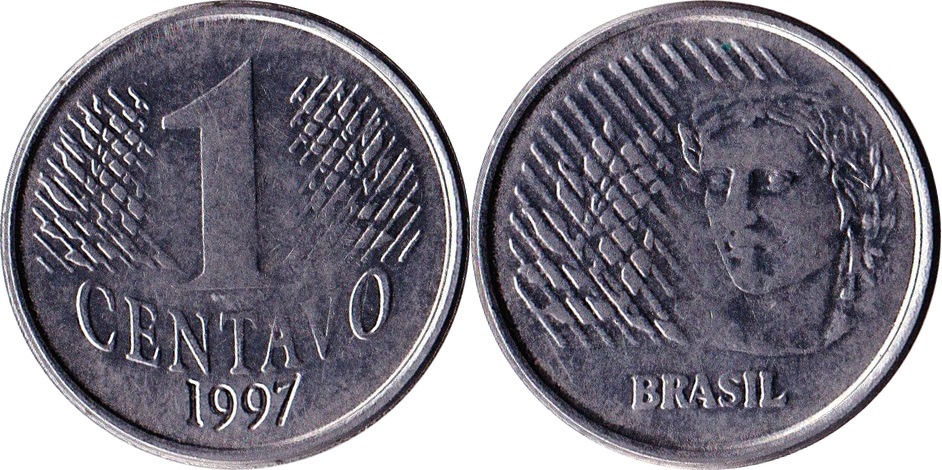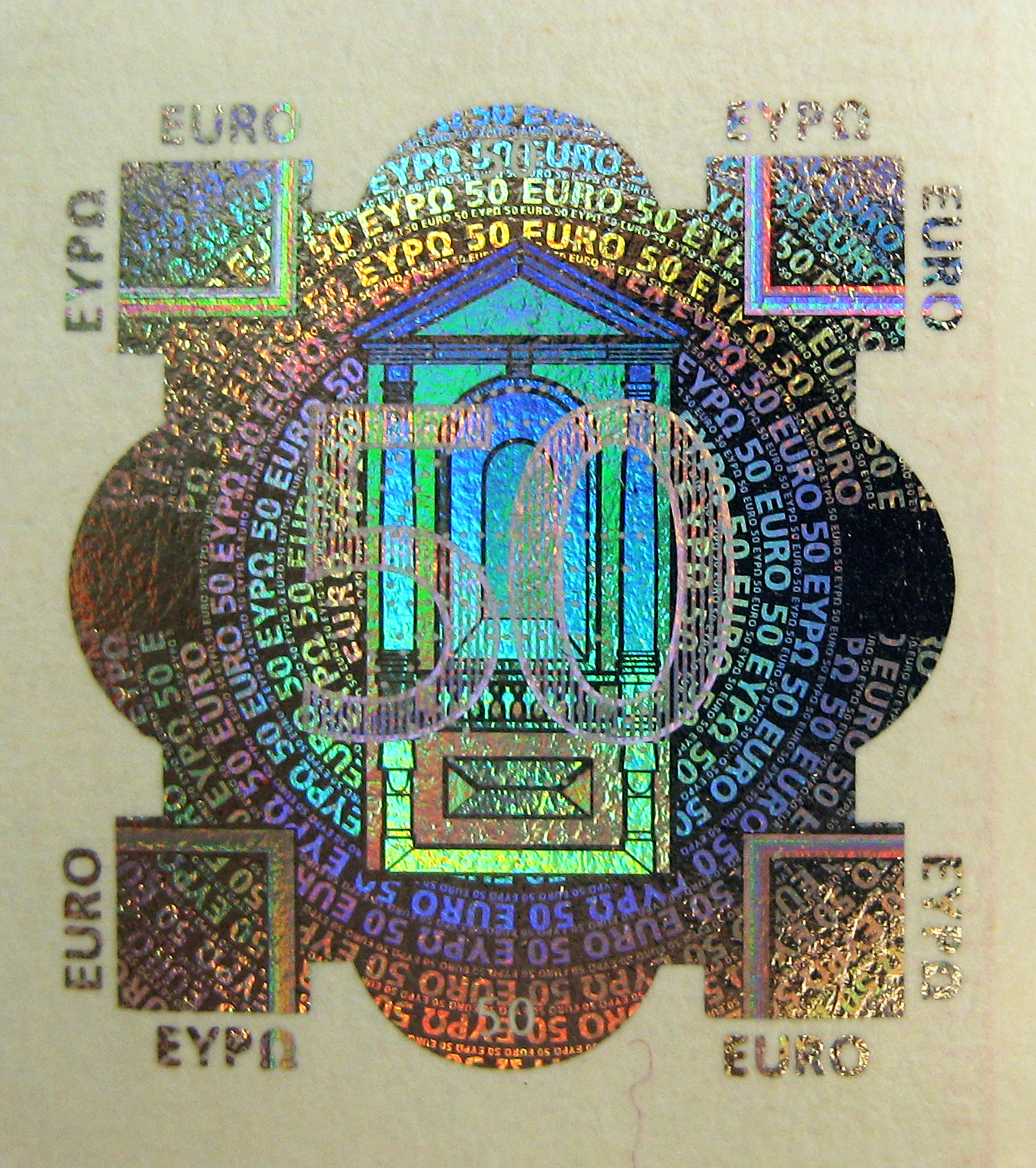|
Color Shifting Ink
Optically variable ink (OVI) also called color shifting ink is an anti-counterfeiting measure used on many major modern banknotes, as well as on other official documents ( professional licenses, for example). The ink displays two distinct colors depending on the angle the bill is viewed at. The United States fifty-dollar bill, for example, uses color shifting ink for the numeral 50 so that it displays copper at one angle and bright green in another. OVI is particularly useful as an anti-counterfeiting measure as it is not widely available, and it is used on security printing. One major manufacturer is a Swiss company called SICPA (Société Industrielle et Commerciale de Produits pour l'Agriculture). Additional suppliers include German company Gleitsmann Security Inks, Sun Chemical (through their Brand Protection Division based in Manchester, UK), and the Swiss company Printcolor AG, located in Berikon, Switzerland. Color-shifting inks reflect various wavelengths in white li ... [...More Info...] [...Related Items...] OR: [Wikipedia] [Google] [Baidu] |
Gleitsmann Security Inks
E.T. Gleitsmann was a German producer of printing ink, founded in Dresden in 1847 by Emil Theodor Gleitsmann. It would later expand into an international network with branches in Austria (Vienna/ Rabenstein), Hungary (Budapest), Italy (Turin) and Sweden (Trelleborg Trelleborg () is a town in Skåne County, Sweden, with 43,359 inhabitants as of December 31, 2015. It is the southernmost town in Sweden located some west from the southernmost point of Sweden and the Scandinavian peninsula. It is one of the ...). The headquarters moved to Berlin in 1953. It eventually became part of the Huber Group and changed its name to Gleitsmann Security Inks in 1998. A factory in Trelleborg, Sweden was established in 1901. After World War II, it became independently owned in 1948, changing its name to G-Man. After a series of mergers and ownership changes the company is now a part of Flint Group. References {{DEFAULTSORT:Gleitsmann, E.T. Companies established in 1847 Manufacturing ... [...More Info...] [...Related Items...] OR: [Wikipedia] [Google] [Baidu] |
Brazilian Real
The Brazilian real (plural, pl. '; currency symbol, sign: R$; ISO 4217, code: BRL) is the official currency of Brazil. It is subdivided into 100 centavos. The Central Bank of Brazil is the central bank and the issuing authority. The real replaced the Brazilian cruzeiro real, cruzeiro real in 1994. As of April 2019, the real was the twentieth most traded currency. History Currencies in use before the current real include: * The ''Portuguese real'' from the 16th to 18th centuries, with 1,000 ''réis'' called the ''milréis''. * The ''Brazilian real (old), old Brazilian real'' from 1747 to 1942, with 1,000 ''réis'' also called the ''milréis''. * The ''Brazilian cruzeiro (1942–1967), first cruzeiro'' from 1942 to 1967, at 1 cruzeiro = 1 ''milréis'' or 1,000 ''réis''. * The ''Brazilian cruzeiro novo, cruzeiro novo'' from 1967 to 1970, at 1 cruzeiro novo = 1,000 first cruzeiros. From 1970 it was simply called the ''Brazilian cruzeiro (1967-1986), (second) cruzeiro'' and was u ... [...More Info...] [...Related Items...] OR: [Wikipedia] [Google] [Baidu] |
Euro Banknotes
Banknotes of the euro, the common currency of the Eurozone (euro area members), have been in circulation since the first series (also called ''ES1'') was issued in 2002. They are issued by the national central banks of the Eurosystem or the European Central Bank. The euro was established in 1999, but "for the first three years it was an invisible currency, used for accounting purposes only, e.g. in electronic payments". In 2002, notes and coins began to circulate. The euro rapidly took over from the former national currencies and slowly expanded around the European Union. Denominations of the notes range from €5 to €500 and, unlike euro coins, the design is identical across the whole of the Eurozone, although they are issued and printed in various member states. The euro banknotes are pure cotton fibre, which improves their durability as well as giving the banknotes a distinctive feel. They measure from to and have a variety of color schemes. The euro notes contain many c ... [...More Info...] [...Related Items...] OR: [Wikipedia] [Google] [Baidu] |
Glitter
Glitter is an assortment of small, reflective particles that come in a variety of shapes, sizes, and colors. Glitter particles reflect light at different angles, causing the surface to sparkle or shimmer. Glitter is similar to confetti, sparkles and sequins, but somewhat smaller. Since prehistoric times, glitter has been made from many different materials including stones such as malachite, and mica, as well as insects and glass. Modern glitter is usually manufactured from the combination of aluminum and plastic which is rarely recycled leading some scientists to call for bans on plastic glitter. Antiquity Glittering surfaces have been found to be used since prehistoric times in the arts and in cosmetics. The modern English word "glitter" comes from the Middle English word ''gliteren'', possibly by way of the Old Norse word '' glitra.'' However, as early as 30,000 years ago, mica flakes were used to give cave paintings a glittering appearance. Prehistoric humans are believed ... [...More Info...] [...Related Items...] OR: [Wikipedia] [Google] [Baidu] |
Pearlescent
Iridescence (also known as goniochromism) is the phenomenon of certain surfaces that appear to gradually change color as the angle of view or the angle of illumination changes. Examples of iridescence include soap bubbles, feathers, butterfly wings and seashell nacre, and minerals such as opal. It is a kind of structural coloration that is due to wave interference of light in microstructures or thin films. Pearlescence is a related effect where some or most of the reflected light is white. The term pearlescent is used to describe certain paint finishes, usually in the automotive industry, which actually produce iridescent effects. Etymology The word ''iridescence'' is derived in part from the Greek word ἶρις ''îris'' ( gen. ἴριδος ''íridos''), meaning ''rainbow'', and is combined with the Latin suffix ''-escent'', meaning "having a tendency toward". Iris in turn derives from the goddess Iris of Greek mythology, who is the personification of the rainbow and ... [...More Info...] [...Related Items...] OR: [Wikipedia] [Google] [Baidu] |
Sun Chemical
Sun Chemical is the world's largest producer of printing inks and pigments and is located in Parsippany-Troy Hills, New Jersey. It was incorporated in 1945. The company has its roots as the Lorilleux & Cie. Paris in 1818, but was incorporated under the Sun name in 1945. The company operates the Daniel J. Carlick Technical Center in Carlstadt, New Jersey. Sun Chemical is a member of the DIC Corporation group of companies based in Japan. The company provides materials to packaging, publication, coatings, plastics, cosmetics and other industrial markets, including electronic materials, functional and specialty coatings, brand protection Brand protection is the process and set of actions that a right holder undertakes to prevent third parties from using its intellectual property without permission, as this may cause loss of revenue and, usually more importantly, destroys brand eq ... and product authentication technologies. References External links * {{Authority control ... [...More Info...] [...Related Items...] OR: [Wikipedia] [Google] [Baidu] |
SICPA
SICPA (acronym for the former name ''Société Industrielle et Commerciale de Produits Alimentaires,'' no longer in use) is a Swiss company that provides security inks for currencies and sensitive documents, including identity documents, passports, transport and lottery tickets. According to the Counterfeiting Intelligence Bureau's International Anti-Counterfeiting Directory, SICPA provides more than 85% of the world's currency inks. The company is also involved in the market for secure traceability of products subject to excise duties, such as alcohol and tobacco stamps, and regulated products, such as halal products. A highly secretive company, SICPA employs roughly 3,000 employees and has offices and manufacturing sites in 30 countries worldwide. History Beginnings The company was founded in 1927 by Maurice Amon (1880–1959) in Lausanne to sell Swiss agricultural products, at that time primarily milk and cream, after Amon invented a new type of milking grease that fac ... [...More Info...] [...Related Items...] OR: [Wikipedia] [Google] [Baidu] |
Counterfeiting
To counterfeit means to imitate something authentic, with the intent to steal, destroy, or replace the original, for use in illegal transactions, or otherwise to deceive individuals into believing that the fake is of equal or greater value than the real thing. Counterfeit products are fakes or unauthorized replicas of the real product. Counterfeit products are often produced with the intent to take advantage of the superior value of the imitated product. The word ''counterfeit'' frequently describes both the forgeries of currency and documents as well as the imitations of items such as clothing, handbags, shoes, pharmaceuticals, automobile parts, unapproved aircraft parts (which have caused many accidents), watches, electronics and electronic parts, software, works of art, toys, and movies. Counterfeit products tend to have fake company logos and brands, which results in patent or trademark infringement in the case of goods. They also have a reputation for being lower quality, ... [...More Info...] [...Related Items...] OR: [Wikipedia] [Google] [Baidu] |
Switzerland
). Swiss law does not designate a ''capital'' as such, but the federal parliament and government are installed in Bern, while other federal institutions, such as the federal courts, are in other cities (Bellinzona, Lausanne, Luzern, Neuchâtel, St. Gallen a.o.). , coordinates = , largest_city = Zürich , official_languages = , englishmotto = "One for all, all for one" , religion_year = 2020 , religion_ref = , religion = , demonym = , german: Schweizer/Schweizerin, french: Suisse/Suissesse, it, svizzero/svizzera or , rm, Svizzer/Svizra , government_type = Federalism, Federal assembly-independent Directorial system, directorial republic with elements of a direct democracy , leader_title1 = Federal Council (Switzerland), Federal Council , leader_name1 = , leader_title2 = , leader_name2 = Walter Thurnherr , legislature = Fe ... [...More Info...] [...Related Items...] OR: [Wikipedia] [Google] [Baidu] |
Security Printing
Security printing is the field of the printing industry that deals with the printing of items such as banknotes, cheques, passports, tamper-evident labels, security tapes, product authentication, stock certificates, postage stamps and identity cards. The main goal of security printing is to prevent forgery, tampering, or counterfeiting. More recently many of the techniques used to protect these high-value documents have become more available to commercial printers, whether they are using the more traditional offset and flexographic presses or the newer digital platforms. Businesses are protecting their lesser-value documents such as transcripts, coupons and prescription pads by incorporating some of the features listed below to ensure that they cannot be forged or that alteration of the data cannot occur undetected. A number of technical methods are used in the security printing industry. Security printing is most often done on security paper, but it can also occur on plastic mate ... [...More Info...] [...Related Items...] OR: [Wikipedia] [Google] [Baidu] |






